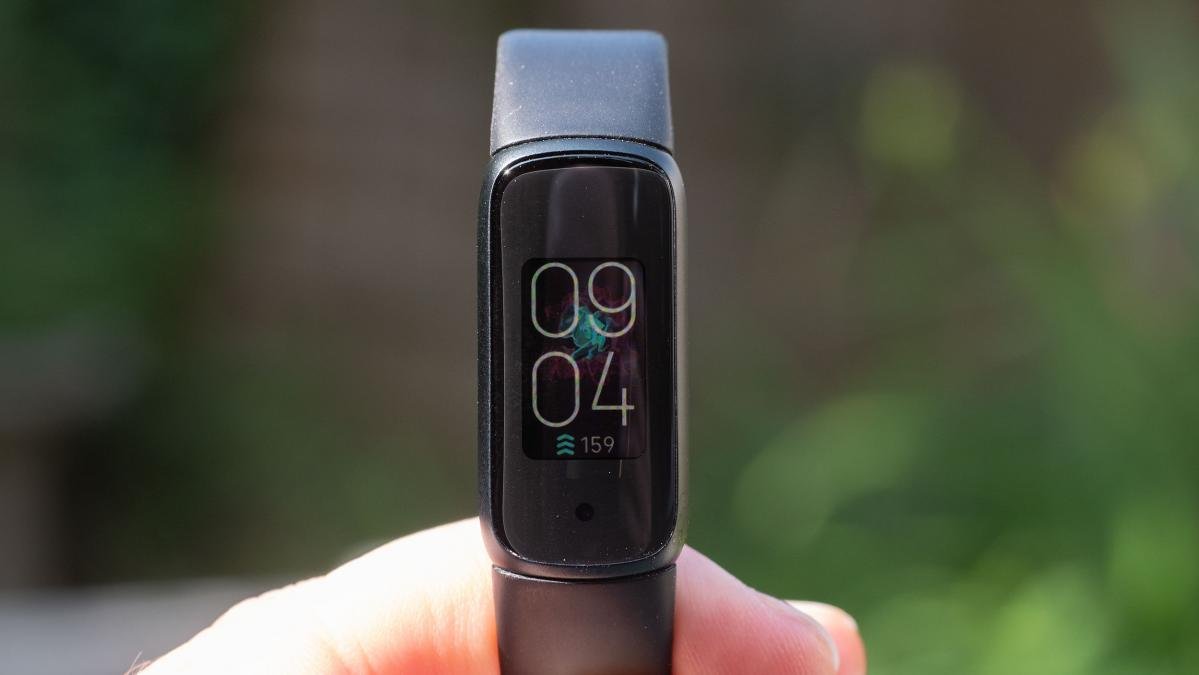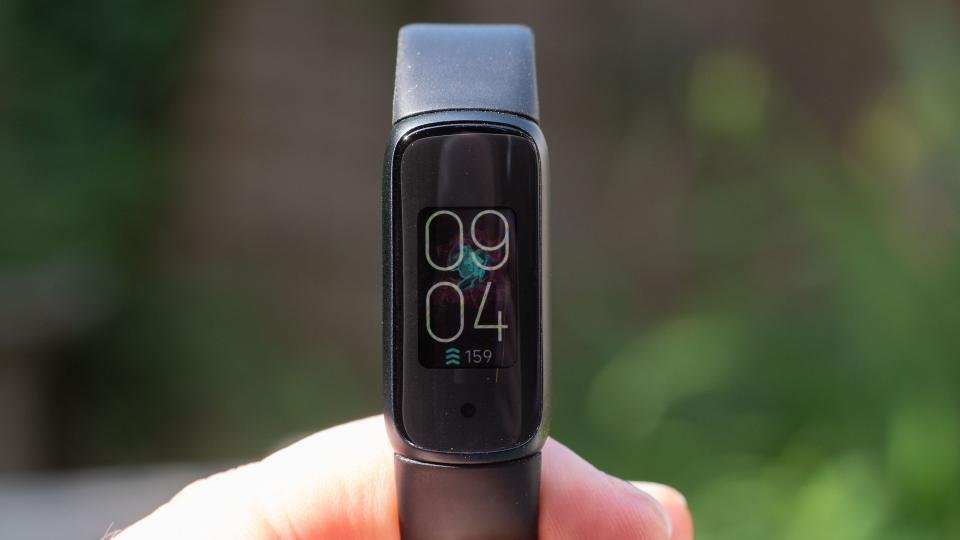
Fitbit’s fashion-conscious wearable looks the part but its heart-rate tracking accuracy is questionable
Pros Sleek, attractive designDecent week-long battery life6 months of Fitbit Premium includedCons Heart-rate tracking is poorScreen is tiny and tricky to readNo GPS or floor counting
Get the Fitbit Luxe for its lowest-ever price
It’s not the best fitness tracker out there, but the Luxe is a sleek and stylish wearable. And what’s more, you can get it for its lowest-ever price this Black Friday: down from an average of £103 to just £89.AmazonAvg £103Now £89Buy Now
You’ve got to give it to Fitbit: its latest wearable, the Fitbit Luxe, manages to break new ground. In a sector where competition is fierce and margins infinitesimally small, that’s no mean feat.
That’s not to say it has added any particularly innovative feature. The Luxe is still a fairly basic tracker at heart and has no GPS. It’s different because it’s the first Fitbit to fully embrace fashion as the main element of its design philosophy.
That’s not to say the Luxe is the first good-looking Fitbit wearable or, indeed, the first to offer designer accessories; the difference is that the Luxe is the first Fitbit to put that aspect front and centre as the main selling point.
READ NEXT: Our guide to the best fitness trackers to buy
Fitbit Luxe review: What do you get for the money?
On the face of it, though, you don’t get a lot for your £130 outlay. The Luxe is a slender fitness tracker with a small 0.76in, 124 x 206 resolution AMOLED touchscreen, and a steel casing that feels solid and well made. Beyond that, its core tracking features are fairly basic: it has an optical heart-rate tracker but it doesn’t have GPS.
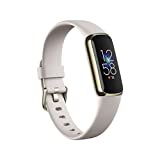
Fitbit Luxe Health & Fitness Tracker with 6-Month Fitbit Premium Membership Included, Stress Management Tools and up to 5 Days Battery, Soft Gold / White
£99.00 Buy now
I was sent the plain black model for this review, which also comes with the black “Classic” silicone rubber wristband, which is comfy enough, if a little bland. If you buy this version, however, you’re missing the point because the Fitbit Luxe’s is all about the bling.
The “Lunar White / Soft Gold” (beige and matte gold) is a supermodel of a fitness tracker and looks fantastic in the photos on the website and the “Orchid / Platinum Stainless Steel” (pink and chrome) model looks fabulous.
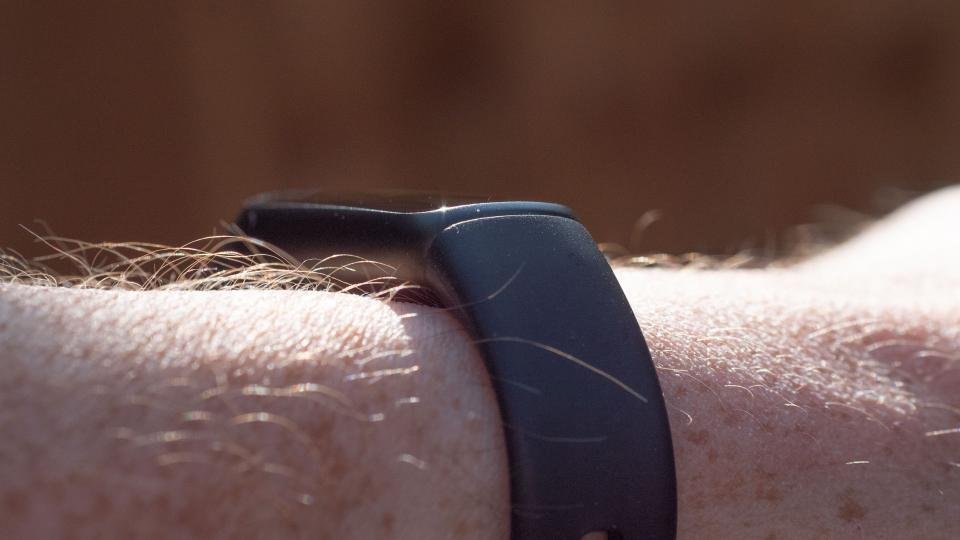
To top off the range of options, there’s a special edition produced in collaboration with jewellery brand Gorjana, which looks more like something Kim Kardashian might wear than a humble fitness tracker. It’s coated in a polished gold finish with a matching “Parker” link bracelet and costs even more than the standard Luxe at £180.
If having different styles to hand for different occasions is important to you, Fitbit has you covered in that respect, too. There’s a steel mesh band in platinum or soft gold (£80), a platinum Parker link bracelet for £90 and a double wrap Horween leather wristband that costs £50.
Clearly, you can buy other trackers that do a similar job to the Luxe for a lot less money but if the thing that put you off fitness wearables before was the way they looked, the Luxe certainly does its best to persuade you otherwise.

Fitbit Luxe Health & Fitness Tracker with 6-Month Fitbit Premium Membership Included, Stress Management Tools and up to 5 Days Battery, Soft Gold / White
£99.00 Buy now
Fitbit Luxe review: What does it track?
Moving on from looks, and what you have here is a fairly standard fitness tracker, albeit with a couple of extra features. It’ll track your steps (although not, disappointingly, floors climbed), estimate how many calories you’ve burned and monitor your sleep patterns.
The heart-rate tracker is there to keep tabs on your ticker and this also has the ability to measure blood oxygen levels (SpO2), heart-rate variability and stress levels. It doesn’t have GPS but you can track speed/pace and location and have your walks and runs displayed on a map if you take your phone out with you.
In this sense, the Luxe is a smaller, slimmer version of the all-singing, all-dancing Fitbit Sense. It even comes with a six-month trial of Fitbit Premium – a subscription-based service that gives you access to a huge range of fitness content (including hundreds of audio and video workouts) and deeper insights into what the Luxe is able to measure. The normal Fitbit Premium trial is 90 days long, so you’re effectively getting three months worth extra. At £7.99 per month, that works out as a bonus £24 worth of content.
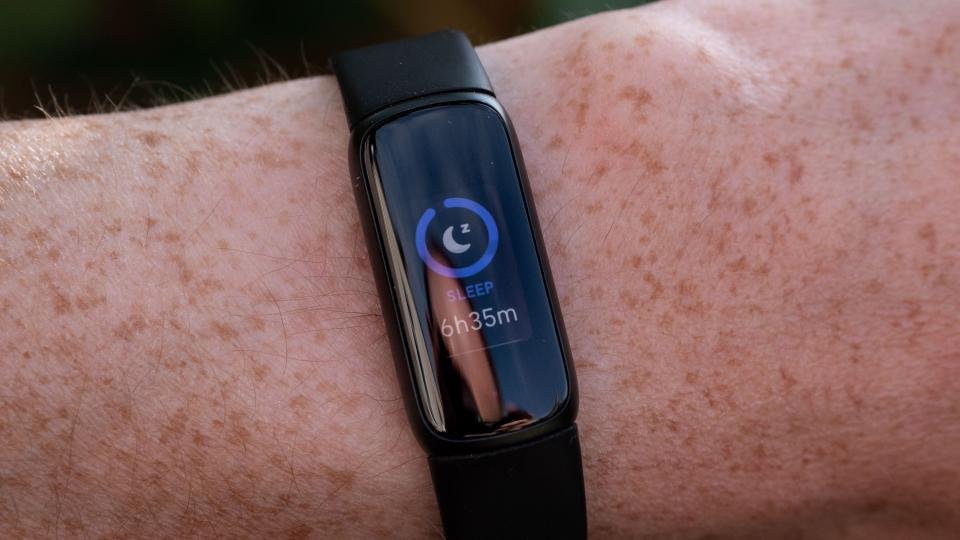
As for exercise goes, you can either choose a workout from Fitbit Premium to follow or just use the Luxe to track a workout as you would with any other tracker. As you’d expect, there’s plenty to choose from here, with the core activities all covered (running, walking, cycling, “workout”, treadmill and pool swimming are loaded by default), plus a number of others, from yoga and weights to golf and kickboxing.
There’s also automatic activity detection, which is handy for those times when you forget to manually start tracking a session from the workout app.
Fitbit Luxe review: How does it perform?
Touchscreen-only operation is usually a no-no for serious running watches, because touchscreens don’t work that well when sweat or rain are involved. The Luxe is no different in this regard; its touchscreen behaves a little erratically if you get it wet.
In dry conditions, however, it works just fine and it’s a doddle using it to navigate your way around. A swipe down from the top of the screen gets you to the tracker’s water lock and do-not-disturb toggles, plus the settings menu shortcut. A swipe up from the bottom shows your progress towards your various targets – daily steps, distance, Active Zone Minutes and calories burned – and you’ll also see how much you slept last night here.
Finally, swiping right or left gets you to the Luxe’s various “apps”. This is Fitbit’s fancy way of referring to the tracker’s various core features: exercise/workouts, alarms, phone notifications, timers and “Relax”, where you can initiate a guided breathing session.
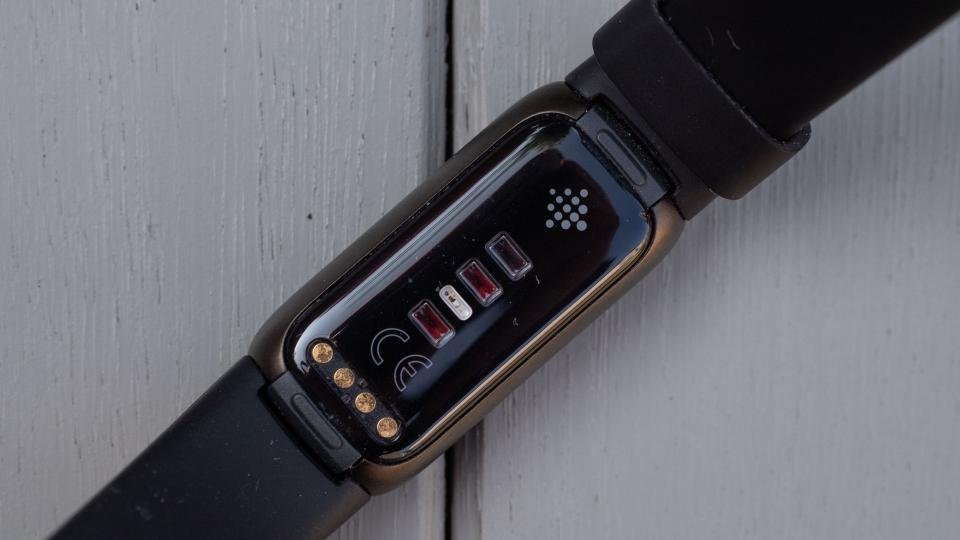
This is where we begin to hit problems, however. I compared the Luxe’s heart-rate readings against a Polar H10 chest belt, which is generally reckoned to be among the best you can buy, and found the Luxe’s readings varied wildly.
On short runs, the Fitbit recorded an average heart rate up to 18bpm above the chest belt and a max heart rate up to 44bpm over. Closer inspection shows the Luxe, on my wrist at least, had trouble locking onto my heart rate accurately for the first 15 minutes or so of the majority exercise sessions. It settled down and behaved itself perfectly after this point but this is clearly not ideal for short sessions. Here are some examples of that in action:
Note, in each case, that during the first portion of the workout, the heart rate is elevated – far higher than it should be at this point, especially since I normally spend the first 10 minutes at least gently warming up.
Normally, I’d attribute this sort of behaviour to a one-off but it happened with such predictability that it began to look like a serious problem. I approached Fitbit for comment, whose response follows:
“As with all of our devices that rely on PurePulse technology, we conducted extensive internal studies using Fitbit Luxe, which showed that it continues to perform to industry standard expectations for optical heart rate on the wrist. Luxe was tested against properly calibrated, scientifically validated control devices like an EKG chest strap across activities including walking, running, daily living activities and more.”
Alas, that doesn’t really add anything useful and it is worth pointing out that your experience may well differ from my own. However, I can’t with all due conscience recommend the Luxe based on this evidence to anyone for whom heart-rate monitoring is a key selling point.
That’s a shame because I’m generally a fan of the way Fitbit presents its data and incentivises activity, either via generic target-hitting, taking part in online challenges with other Fitbit friends (like Get Fit Bingo or simple step challenges), or completing virtual walks.
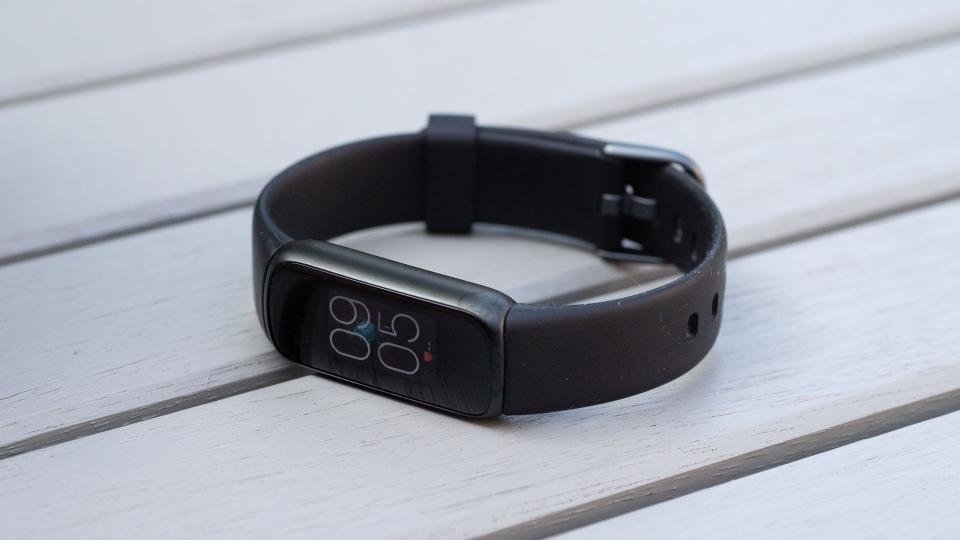
And general activity tracking, which is exactly where the Luxe is pitched, is pretty good. The core metrics – steps, calories, distance and heart rate “Zone minutes” – take centre stage here but there’s a wealth of other health data to discover in the Fitbit app.
Tap the Health Metrics card on the app’s home screen, for instance, and you’ll see your average breathing rate, heart-rate variability, skin temperature and resting heart rate stats laid bare, plotted on a graph over the course of the previous week or month.
Sleep tracking is excellent, too. As with most trackers, it can be fooled by a late evening snooze on the sofa, but the data provided is useful. It gives you an overall score for your night’s sleep, then breaks your sleep into light, awake, deep and REM “stages”.
Again, there’s more detailed information available if you want to delve in, with information on your sleeping heart rate, restlessness, breathing rate and blood oxygen variation. The latter is where the SpO2 measurement comes into play, although you can’t do a spot check as you can with the Fitbit Sense and some Garmin wearables. Instead, the Luxe displays trends in oxygen saturation variability. A high level, the Fitbit app tells us, “can be linked to breathing issues”.
Lastly, it’s good to see that battery life is pretty decent. While Fitbit claims the Luxe can only manage up to five days between charges, I found it exceeded that on a fairly regular basis. Sure, it doesn’t have GPS draining the battery but with a full-colour OLED screen to power, around a week between charges isn’t bad at all.

Fitbit Luxe Health & Fitness Tracker with 6-Month Fitbit Premium Membership Included, Stress Management Tools and up to 5 Days Battery, Soft Gold / White
£99.00 Buy now
Fitbit Luxe review: How could it be better?
There are a couple of key things about the Fitbit Luxe that holds it back from a decent score and a recommendation, aside from the problem with heart rate tracking. The first is that the screen is very small, which means onscreen text and stats are absolutely tiny.
I have pretty good eyesight and found it tough to focus on the display while exercising, so if you have poor vision and tend not to wear glasses while you exercise, you’re going to struggle to see much of what appears on the display.
While I’m at it, it’s also worth noting that, if you choose to link the Fitbit with a third-party service such as Strava or Runkeeper, workouts without GPS data (ie via your phone) simply won’t export. That’s not a problem if you stick solely within the Fitbit platform but if you want to branch out you’ll find a lot of your workouts will be well and truly stuck.
READ NEXT: Our guide to the best fitness trackers to buy
Fitbit Luxe review: Should you buy it?
I have no doubt that, for some, the Fitbit Luxe ticks all the boxes. It looks great on the wrist, it’s slender and light, and you can buy some very nice looking accessories, too.
However, with flawed heart rate monitoring and plenty of alternatives available, not least from Fitbit’s own stable, it’s a tough, tough sell. The Fitbit Charge 4, for instance, might lack some of the Luxe’s more advanced features, but it comes with GPS, looks very nearly as stylish and costs around the same amount of money or even less.
